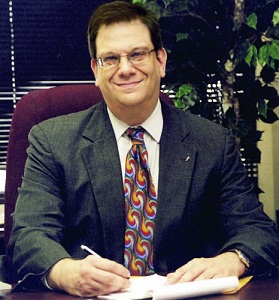February 2016, Vol. 243, No. 2
Editor's Notebook
Notebook: Now for the Good News

I’m doing research for presentations I’ve been asked to give before some groups in coming months, including Pipeliners Association of Houston and the Tennessee Gas Association. Obviously everyone knows about the chaos that “The Great Unwinding” is causing as the price of crude continues its historic downward spiral. Natural gas is doing somewhat better as it remains tied to a domestic market base.
So, no need to depress my audiences any more than they already are. Actually, there is plenty of good news to talk about these days, especially if you’re in the natural gas business. Even more so if you live or work in my home state of Pennsylvania, heart of the Marcellus Shale. Last year Democratic Gov. Tom Wolf appointed a high-level task force of 48 individuals to do a comprehensive study on the issue of pipeline infrastructure development and turn in their findings this month.
How much work are we talking about? Try 30,000 miles of new pipeline over the next 10 years, including 4,600 miles of interstate pipe by the end of 2018. A presentation by The Nature Conservancy suggests that the miles of natural gas gathering alone will at least quadruple by 2030. Such is the scope that “the footprint of just that expansion is larger than the cumulative area impacted by all other Marcellus gas infrastructure combined, and could exceed 300,000 acres, or 1% of the state’s land area.
“The movement of natural gas will also require compressor stations, estimated to number in the hundreds. All told, this pipeline infrastructure buildout will impact communities and the environment in every county in Pennsylvania.”
This is definitely the news that the gas industry, pipeline contractors and service providers are desperate to hear. It should also be positive news for a state that has had no economic growth for over a half-century, until the Marcellus was discovered. That’s a fact you can take to the bank.
Gov. Wolf isn’t as industry-friendly as was his predecessor, Republican Tom Corbett. He wants producers to pay higher royalties and is also committed to a strict environmental plan intended to minimize emissions. But he’s astute enough not to kill the goose that laid the golden egg, hence assigning the task force to develop the best state-of-the-art pipeline program in the country.
For the most part, energy companies have behaved well while working in Pennsylvania. When you deal with a delicate and combustible fuel like natural gas, incidents can and will happen, no matter how safe you try to be. Dealing with landowners and communities in regions where energy development is new is also a major challenge. I’m certain there are a few companies that have put undue pressure on landowners in trying to acquire a right-of-way, perhaps threatening to use eminent domain. The vast majority of operators plan to do business there for decades and want to build lasting relationships.
Just as I vouch for the veracity of most operators, I doubt most residents are strongly opposed to development. Rather, they see it as offering economic opportunities for their families and communities well into the future. Not only will they have an abundant supply of cheap natural gas, but so will manufacturers and other businesses dependent on gas as a feedstock. They want information from people they can relate to and trust.
But then there are those very few misguided malcontents, emboldened by President Obama’s rejection of the Keystone XL Pipeline, that are determined to stop any fossil fuel development. Pipelines have become the de facto battleground against fracking. I doubt any have ever seen a real pipeline, though they’ve enjoyed their products
At the last hearing Jan. 20 in Harrisburg, seven protesters briefly disrupted the meeting by jumping on tables, shouting slogans and marching with their signs before being removed and arrested. Of course this was picked up on YouTube, the local news media and social media. Bill McGibben, the self-proclaimed godfather of the anti-fossil fuel movement, hails these disrespectful buffoons as heroes. They are anything but that. They got their photo op.
NIMBY is alive and well, perhaps stronger than ever, because it just takes a few malcontents to wreck progress for others. The industry is determined to try its own advocacy approach, but I have a better plan, one that doesn’t involve $200-an-hour PR people. Try sending in people who actually work in energy, someone communities feel they can trust.
Written by Jeff Share, Editor





Comments